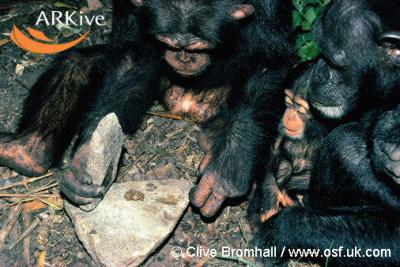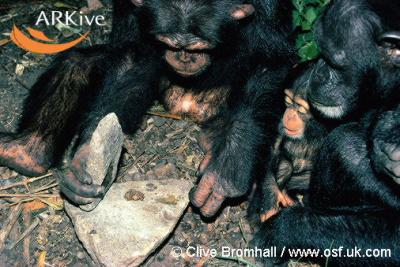
Using a research design that simulated transmission over multiple generations, researchers Victoria Horner, PhD, of the University of St. Andrews and the Yerkes Research Center, along with Yerkes researcher Frans B.M. de Waal, PhD, and St. Andrews researcher Andrew Whiten, PhD, were able to more closely examine how chimpanzees learn from each other and the potential longevity of their culture. In doing so, they confirmed that a particular behavior can be transmitted accurately along a chain of up to six chimpanzees, representing six simulated generations equaling approximately 90 years of culture in the wild. A comparative benchmark study with three-year-old human children, conducted by St. Andrews researcher Emma Flynn, PhD, revealed similar results, providing further evidence chimpanzees, like humans, are creatures of culture.
In the study, researchers began by introducing a foraging technique to two chimpanzees, one each from two separate social groups, to train them to open a special testing box one of two ways -- either by sliding or lifting the door -- to reveal fruit inside. Chimpanzees in a third social group, used as the control group, were allowed to explore the testing box but were given no instruction or training to open the testing box. Once each individual animal from the first two social groups proved successful, another animal from the same social group was allowed to observe the process before interacting with the testing box. Once the second animal succeeded, another chimpanzee would enter and observe the technique, and so on down the chain. In the two social groups trained to slide or lift the door, the technique used by the original animal was passed to up to six chimpanzees. The chimpanzees in the control group were able to discover both methods through individual exploration, suggesting the exclusive use of a single technique in the non-control groups was due to behavioral transmission from a previous animal.
"The chimpanzees in this study continued using only the technique they observed rather than an alternative method," said Horner. "This finding is particularly remarkable considering the chimpanzees in the control group were able to discover both methods through individual exploration. Clearly, observing one exclusive technique from a previous chimpanzee was sufficient for transmission of behavior along multiple cultural generations."
This research may contribute to a better understanding of how chimpanzees learn complex behaviors in the wild. "By conducting controlled cultural experiments with captive chimpanzees, we are able to learn more about wild population-specific behavioral differences, thought to represent a form of cultural variation," said Horner. "These findings also show great similarity between human and chimpanzee behavior, suggesting cultural learning may be rooted deep within the evolutionary process."
Further studies by researchers at the Yerkes-based Living Links Center, established in 1997 to facilitate primate studies that shed light on human behavioral evolution, may expand on these findings by examining the cognitive mechanisms involved in cultural learning and the generational transmission of behavior and traditions.
For more than seven decades, the Yerkes National Primate Research Center of Emory University has been dedicated to advancing scientific understanding of primate biology, behavior, veterinary care and conservation, and to improving human health and well-being. Today, the center, as one of only eight National Institutes of Health-funded national primate research centers, provides specialized scientific resources, expertise and training opportunities. Recognized as a multidisciplinary research institute, the Yerkes Research Center is making landmark discoveries in the fields of microbiology and immunology, neuroscience, psychobiology and sensory-motor systems. Research programs are seeking ways to: develop vaccines for AIDS and malaria; treat cocaine addiction; interpret brain activity through imaging; increase understanding of progressive illnesses such as Parkinson's and Alzheimer's; unlock the secrets of memory; determine behavioral effects of hormone replacement therapy; address vision disorders; and advance knowledge about the evolutionary links between biology and behavior.
Fuente: http://www.sciencedaily.com/releases/2006/08/060830075548.htm
Fecha: 30/08/2006



